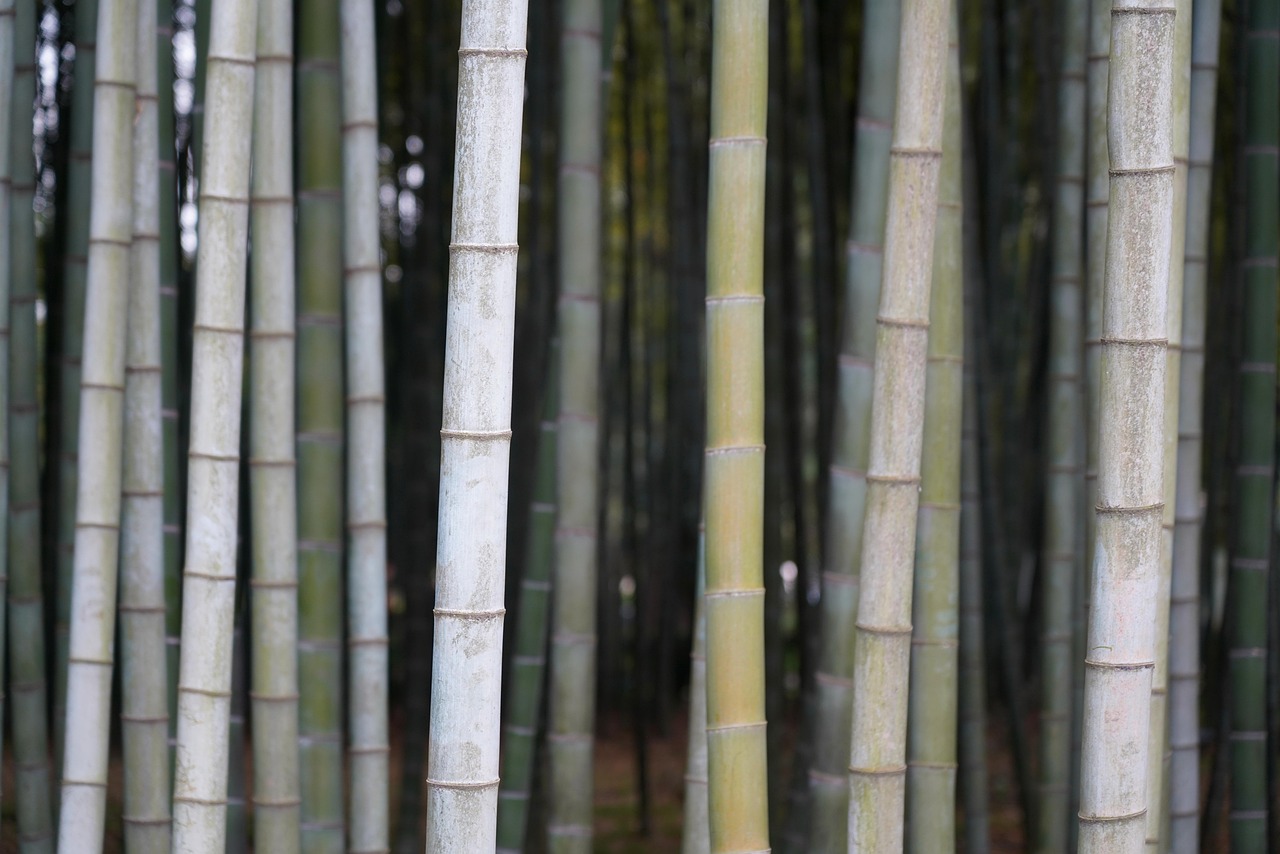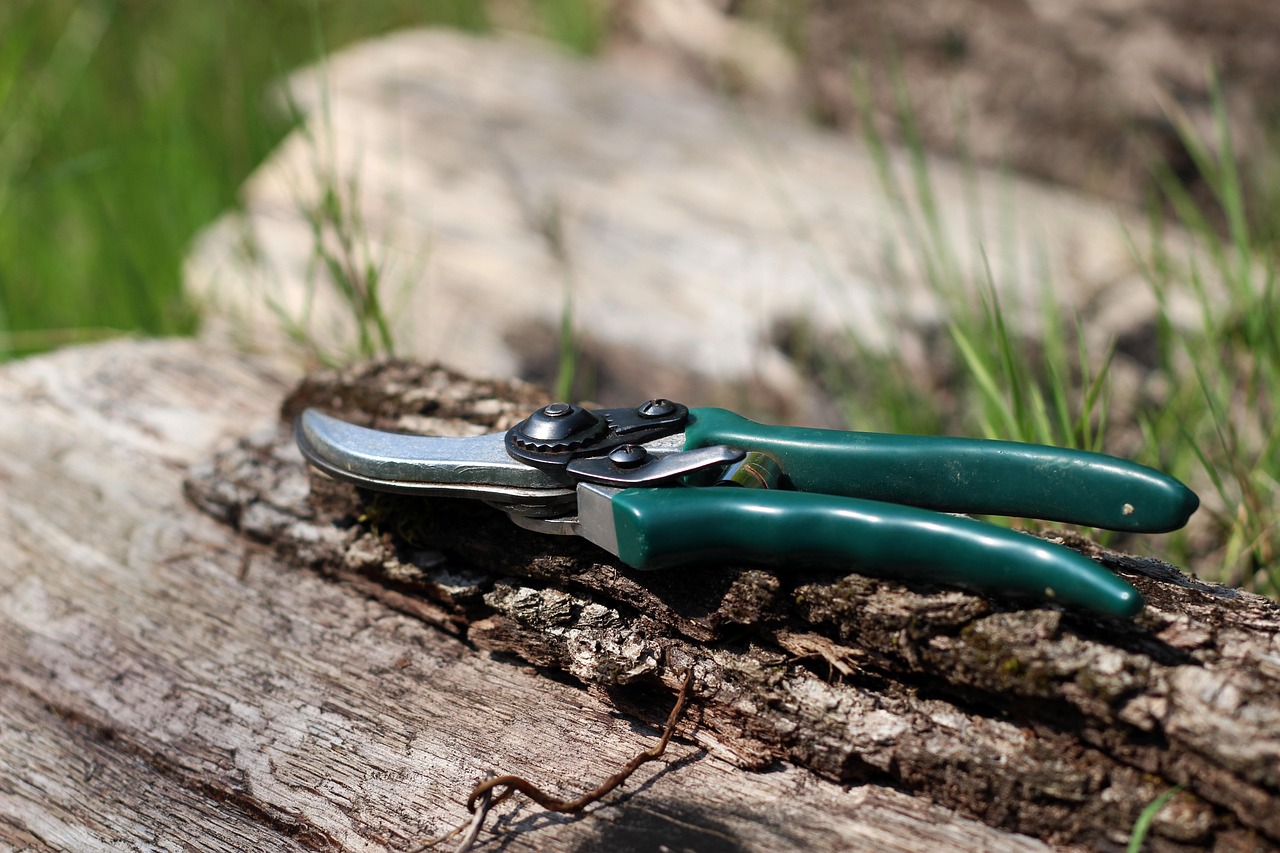Pruning bamboo is essential for maintaining its health and aesthetic appeal in ornamental and decorative gardens. Proper pruning encourages new growth, controls height, and removes dead or damaged canes.
Bamboo is a versatile plant that adds beauty and privacy to gardens. Known for its rapid growth and unique appearance, it can create serene spaces and striking focal points. However, without proper maintenance, bamboo can become unruly. Pruning helps manage its size and shape, making it an important task for gardeners.

There are several types of bamboo, generally categorized into two main groups: clumping and running. Clumping bamboo grows in tight clusters, while running bamboo spreads quickly through underground rhizomes. Understanding the type of bamboo is crucial for effective pruning and management.
| Bamboo Type | Growth Habit | Pruning Needs |
|---|---|---|
| Clumping Bamboo | Forms tight clusters | Minimal pruning needed; remove dead canes |
| Running Bamboo | Spreads aggressively | Regular pruning to control spread and height |
Understanding the Importance of Pruning Bamboo
Pruning bamboo serves multiple purposes. First, it helps maintain the aesthetic appeal of your garden. Overgrown bamboo can overshadow other plants and disrupt the balance of your landscape design. Second, regular pruning promotes healthy growth by allowing more sunlight and air to reach the inner canes. This also reduces the risk of diseases that thrive in dense foliage.
Additionally, pruning can improve the structural integrity of your bamboo. Removing older, weaker canes allows younger canes to thrive. This process not only revitalizes the plant but also enhances its overall appearance. Healthy bamboo plants exhibit vibrant colors and robust growth, making them attractive additions to any garden.

Another significant reason for pruning is safety. Tall bamboo can pose a risk during storms or high winds. By ensuring that your bamboo is properly pruned, you minimize the chances of branches breaking off and causing damage to nearby structures or plants.
When to Prune Bamboo
The timing of your pruning efforts is crucial for achieving the best results. Generally, the best time to prune bamboo is during its active growth period in late spring to early summer. During this time, the plant is more resilient and can recover quickly from the stress of cutting.
However, some gardeners prefer to prune in late fall or winter when the plant is dormant. This timing can help control growth before the new season begins. Regardless of when you choose to prune, it is essential to monitor weather conditions. Avoid pruning during extreme temperatures or wet conditions to prevent damaging the plant.

Tools Needed for Pruning Bamboo
Having the right tools is essential for effective bamboo pruning. Here are some commonly used tools:
- Hand Pruners: Ideal for cutting smaller canes and branches.
- Loppers: Useful for thicker canes that hand pruners cannot handle.
- Saws: Necessary for larger bamboo species requiring more substantial cuts.
- Gloves: Protect your hands from sharp edges and thorns.
- Safety Goggles: Safeguard against flying debris while cutting.
Before starting any pruning task, ensure your tools are clean and sharp. Clean tools help prevent the spread of diseases between plants. Regular maintenance of your tools will make your pruning more efficient and effective.
Pruning Techniques for Bamboo
There are several techniques you can use when pruning bamboo to achieve desired results. Here are some effective methods:

- Selective Pruning: Focus on removing specific dead or damaged canes rather than cutting back healthy ones. This method promotes a natural look and allows healthy growth.
- Topping: Reduce the height of tall canes by cutting them back at a node. This encourages bushier growth lower on the plant.
- Thinning: Remove some of the older canes at the base to promote airflow and light penetration. This helps maintain plant health.
By employing these techniques, you can effectively manage your bamboo’s growth while enhancing its visual appeal within your garden setting.
Common Mistakes to Avoid When Pruning Bamboo
Pruning bamboo can be a rewarding task, but it is important to avoid common mistakes that might harm the plant or affect its growth. Here are some pitfalls to watch out for:
- Over-pruning: Removing too many canes or cutting them back excessively can stress the plant. It is crucial to maintain a balance and only remove what is necessary.
- Ignoring the Growth Habit: Not all bamboo species require the same pruning methods. Understanding whether you have clumping or running bamboo will guide your approach.
- Pruning at the Wrong Time: Timing is vital. Pruning too early or too late in the season can hinder growth and recovery. Stick to the recommended periods for your specific bamboo type.
- Neglecting Clean Tools: Using dirty or rusty tools can introduce diseases to your bamboo. Always clean tools before and after use.
- Failure to Assess Health: Before pruning, check the overall health of your bamboo. Pruning unhealthy canes may not yield the desired results.
Avoiding these mistakes can lead to healthier bamboo and a more attractive garden. Always take your time and assess your plants before making cuts.
Seasonal Care for Bamboo
Proper seasonal care complements pruning efforts and enhances the health of your bamboo throughout the year. Each season presents unique challenges and opportunities for care.
Spring Care
As bamboo begins to grow actively in spring, it is an excellent time for the first pruning session. During this period, focus on:
- Removing Dead Canes: Eliminate any dead or damaged canes to promote healthy new growth.
- Fertilizing: Apply a balanced fertilizer to support vigorous growth as the plant awakens from dormancy.
Summer Care
In summer, bamboo reaches its peak growth. Care during this time should include:
- Monitoring Water Needs: Ensure that your bamboo receives adequate water, especially in hot weather. Bamboo prefers moist soil but should not be soggy.
- Additional Pruning: If necessary, conduct light pruning to maintain shape and remove any unwanted growth.
Fall Care
As temperatures cool in fall, prepare your bamboo for winter. Key tasks include:
- Final Pruning: Complete any necessary pruning before winter sets in to minimize stress on the plant.
- Mulching: Apply a layer of mulch around the base to protect roots from freezing temperatures.
Winter Care
During winter, bamboo goes dormant. Care should focus on protecting the plant from harsh conditions:
- Avoid Heavy Snow Accumulation: Gently brush off heavy snow from the canes to prevent breakage.
- Limit Watering: Reduce watering as the plant is not actively growing. Water only if the soil becomes extremely dry.
Pests and Diseases Affecting Bamboo
Bamboo, while generally hardy, can be susceptible to various pests and diseases. Being aware of these issues helps in early detection and management.
Pests
Common pests that may affect bamboo include:
- Bamboo Mites: These small pests can cause leaf discoloration and distortion. Regular inspection helps catch infestations early.
- Aphids: Aphids feed on new shoots and can lead to stunted growth. They often leave behind a sticky residue known as honeydew.
- Root Borers: These pests burrow into the roots, potentially causing significant damage. Look for signs of wilting or yellowing leaves.
Diseases
Bamboo can also face diseases, including:
- Bacterial Blight: This disease causes brown spots on leaves and can spread rapidly in damp conditions.
- Mold and Fungi: Excess moisture can lead to fungal infections that damage foliage and stems.
If you notice signs of pests or diseases, it is important to take action promptly. Use organic insecticides or fungicides as needed, and consider consulting with a gardening expert for severe infestations.
The Aesthetic Benefits of Bamboo in Gardens
Bamboo is not only functional but also adds significant aesthetic value to ornamental and decorative gardens. Its unique appearance and movement create an engaging visual experience.
The tall, slender canes of bamboo bring height and drama to garden designs. They can act as natural screens or hedges, providing privacy without blocking light completely. Additionally, bamboo’s lush foliage adds texture and color, complementing other plants beautifully.
The sound of bamboo swaying in the wind creates a soothing ambiance, enhancing relaxation in outdoor spaces. When incorporated thoughtfully, bamboo can transform ordinary gardens into serene retreats.
The versatility of bamboo allows it to fit into various design styles, from contemporary landscapes to traditional gardens. With a bit of creativity and care, it can become a focal point or a subtle background element that enhances the overall design.
Choosing the Right Bamboo for Your Garden
When selecting bamboo for ornamental and decorative gardens, it is essential to choose the right species that will thrive in your specific environment. Various species of bamboo offer different appearances, growth habits, and maintenance needs. Understanding these differences will help you make an informed decision.
Factors to Consider
Several factors influence the choice of bamboo species:
- Climate: Different bamboo species thrive in various climates. Some prefer warm, humid environments, while others are more tolerant of cold.
- Space Availability: Consider how much space you have. Running bamboo can spread quickly, while clumping bamboo stays more contained.
- Purpose: Determine what you want to achieve with bamboo. Do you need a privacy screen, a decorative feature, or erosion control? Your goal will guide your choice.
- Soil Conditions: Assess your soil type and drainage. Some bamboo species prefer well-drained soil, while others can tolerate wetter conditions.
Popular Bamboo Species for Gardens
Here are some popular bamboo species suitable for ornamental gardens:
| Bamboo Species | Growth Habit | Height | Notes |
|---|---|---|---|
| Fargesia murielae (Umbrella Bamboo) | Clumping | 4-8 feet | Cold hardy; great for small spaces. |
| Phyllostachys aurea (Golden Bamboo) | Running | 10-20 feet | Fast-growing; prefers full sun. |
| Bambusa vulgaris (Common Bamboo) | Clumping | 30-50 feet | Large canes; ideal for tropical climates. |
| Phyllostachys nigra (Black Bamboo) | Running | 20-30 feet | Distinctive black canes; ornamental value. |
Selecting the right bamboo species will enhance your garden’s beauty and ensure that the plant thrives in its environment.
Design Ideas Incorporating Bamboo
Bamboo can be used creatively in garden design. Here are some ideas on how to incorporate bamboo effectively:
Bamboo Privacy Screens
Bamboo is an excellent choice for creating privacy screens. Its dense growth can block views, making it perfect for patios or backyards. To create a privacy screen:
- Select a Fast-Growing Species: Choose running bamboo for quicker results or clumping bamboo for more control.
- Plant in Rows: Plant several bamboo plants in a row to form a dense barrier.
- Consider Height: Select varieties that grow tall enough to provide adequate screening.
Bamboo Fencing and Trellises
Bamboo can also serve as fencing or trellises in your garden. Here are some ideas:
- Bamboo Fencing: Use bamboo poles to create a natural-looking fence that blends seamlessly into your garden.
- Trellises: Construct trellises from bamboo to support climbing plants such as beans or flowering vines.
Bamboo Accents and Features
Bamboo can serve as decorative accents in your garden design. Consider these options:
- Bamboo Planters: Use bamboo to create unique planters that add texture and height to your garden beds.
- Bamboo Arbors: Build an arbor from bamboo to create an inviting entrance or walkway.
- Bamboo Water Features: Incorporate bamboo into water features such as small fountains or ponds for a tranquil effect.
Caring for Your Bamboo After Planting
Caring for bamboo after planting is crucial for its successful establishment and growth. Follow these guidelines to ensure healthy plants:
Watering
Bamboo requires consistent moisture, particularly in the first year after planting. Here are some watering tips:
- Regular Watering: Water newly planted bamboo deeply once a week, especially during dry spells.
- Avoid Overwatering: Ensure that the soil drains well to prevent root rot.
Fertilizing
Adequate nutrition is vital for healthy bamboo growth. Consider the following fertilization practices:
- Use Balanced Fertilizers: Apply a balanced fertilizer in early spring to promote new growth.
- Avoid Excess Nitrogen: Too much nitrogen can lead to weak growth and susceptibility to pests.
Pest Management
Regular inspections help catch pests early. Here are some management strategies:
- Natural Predators: Encourage beneficial insects that prey on common pests like aphids.
- Pesticide Application: Use organic pesticides as a last resort if pest populations become overwhelming.
The Role of Bamboo in Sustainable Gardening
Bamboo is not only beautiful but also environmentally friendly. Its rapid growth and regenerative properties make it a sustainable choice for gardeners. Here are some ways bamboo contributes to sustainable gardening practices:
- Soil Erosion Control: The extensive root system of bamboo stabilizes soil and prevents erosion.
- Carbon Sequestration: Bamboo absorbs carbon dioxide and produces oxygen at a higher rate than many trees, contributing positively to air quality.
- Biodiversity Enhancement: Bamboo provides habitat and food for various wildlife species, promoting biodiversity in your garden.
Incorporating bamboo into your garden not only enhances its beauty but also supports sustainable practices that benefit the environment. By understanding how to select, design, and care for bamboo, you can create a flourishing space that is both functional and visually appealing.
Additional Benefits of Bamboo in Garden Design
In addition to its aesthetic appeal and sustainability, bamboo offers several other benefits that enhance garden design. These advantages can make bamboo an even more attractive option for gardeners looking to create beautiful landscapes.
Noise Reduction
Bamboo can serve as a natural sound barrier. Its dense foliage and tall canes can help absorb and deflect noise, making it an excellent choice for gardens located near busy streets or urban areas. This property allows you to enjoy a more tranquil outdoor space.
Versatile Landscaping Applications
Bamboo is highly versatile in landscaping applications. Here are some ways you can incorporate it:
- Pathways: Bamboo can be used to create attractive walkways or borders that guide visitors through your garden.
- Garden Structures: Use bamboo to build structures like arches, pergolas, or fences that enhance the visual interest of your garden.
- Container Gardening: Bamboo looks stunning in large pots or containers, allowing for mobility and flexibility in garden design.
Seasonal Interest
Bamboo provides year-round interest in the garden. In spring and summer, it boasts lush green foliage that offers shade and privacy. In fall, some species develop striking colors, while in winter, the bare canes can create a unique silhouette against the landscape. This seasonal variation contributes to a dynamic garden environment.
Integrating Bamboo with Other Plants
Bamboo can be a fantastic companion plant in various garden settings. When integrating bamboo with other plants, consider the following:
Companion Planting
Choosing the right companion plants enhances the aesthetics and health of your bamboo. Here are some suitable companions:
- Hostas: Their broad leaves contrast beautifully with bamboo’s slender canes.
- Ferns: These shade-loving plants thrive well alongside bamboo and add lush greenery.
- Ornamental Grasses: Grasses can complement bamboo’s texture and movement while adding height variation.
Creating Layers
Bamboo’s height allows you to create layers in your garden design. Plant shorter perennials or annuals in front of bamboo to frame its verticality. This layering technique adds depth and interest to your garden beds.
Long-Term Maintenance of Bamboo
Maintaining bamboo involves more than just pruning. Long-term care is essential to ensure its health and beauty over the years:
Regular Monitoring
Keep an eye on your bamboo plants for signs of stress, pests, or disease. Regular checks will help you catch issues early, allowing for timely intervention.
Mulching
Applying mulch around the base of bamboo helps retain moisture, suppress weeds, and regulate soil temperature. Organic mulch materials such as wood chips or straw are excellent choices.
Dividing Clumping Bamboo
If you have clumping bamboo, consider dividing it every few years. This process allows you to manage its size and spread while also creating new plants for other areas of your garden or sharing with friends.
Final Thoughts
Bamboo is more than just a decorative element in gardens; it is a sustainable, versatile plant that offers numerous benefits. From its ability to enhance aesthetics to providing environmental advantages, bamboo plays a significant role in modern gardening practices. By selecting the right species, incorporating effective pruning techniques, and understanding long-term care practices, gardeners can create stunning landscapes that thrive year-round.
The unique qualities of bamboo make it a valuable addition to any garden, whether you’re looking for privacy, beauty, or ecological benefits. As you explore the possibilities of bamboo in your ornamental and decorative gardens, remember that thoughtful planning and care will ensure that your bamboo thrives and continues to enrich your outdoor spaces for years to come.
